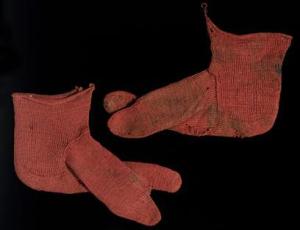Allie Bennett, owner of Stitchville, muses on the history of sewing: Let's talk about the oldest form of textile arts, shall we? It's not knitting or weaving or spinning, but sewing! Neanderthals were sewing well before it was cool, making clothing and shelter out of skins and fur and fastening it using bones for needles and guts for thread. And you though sewing was for sissies!

Sewing was done by hand for thousands of years, until the sewing machine was made in the 19th century. And it's not just for clothes! Shoemaking, bookbinding, and sailing- all of these occupations required skill with the needle and thread.
Sewing was largely woman's work- as it was a woman's duty to take care of the home. Fabric was expensive and the longevity of clothes was very important. Mending and revitalizing the clothing was critical. Even after a useful life, clothing could be made into quilts and other household items.

The invention of the sewing machine changed the lives of many. Barthelemy Thimonnier was the first to introduce a simplified machine to yield France's military uniforms in 1841. However, a mob of angry tailors broke into the shop and destroyed the machines, believing they would be put out of work by them. Issac Singer produce a smaller and more accurate machine in 1850. This gave rise to the garment sweatshops in New York City and London, where thousands of machine operators cranked out clothing. Tailors were considered superfluous and employed only by those who could afford such finery.

So whether you make clothes, quilts, or crafts, you now have an idea of how the oldest of the textile arts came about. As they say, necessity if the mother of all invention. So, sew!





